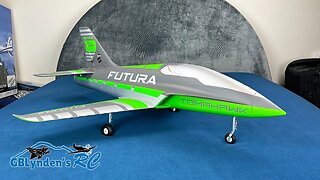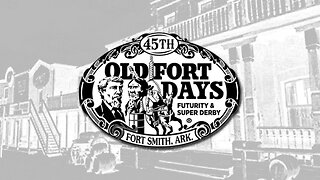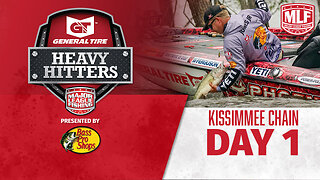Parkzone / E-flite FW-190 Maiden Flight of the Luftwaffe Butcher Bird WWII RC Warbird
This is the maiden flight review of the Parkzone / E-flite FW-190 WWII RC Warbird or Parkzone Focke-Wulf 190A-8 Bind-N-Fly Basic or BNF Basic. It is often referred to as the the Butcher Bird. It was a dirty bird in the Luftwaffe of Nazi Germany during World War Two.
Here is a link to my Amazon Store to help support the channel and keep it independent: https://www.amazon.com/shop/gblyndensrc
RC Equipment Used In This Video:
- Spektrum DX6 Radio: https://amzn.to/2RgoDes
This Parkzone FW-190 parkflyer WWII Warbird RC Plane Unboxing, Maiden Flight, and Flight Review video review contains an unboxing, maiden, and review to show what one should expect if they purchase this PNP (Plug-N-Play) RC model. I am very honest and have no bias since I paid for this myself.
This RC Plane Park Flyer is brought to us by RC juggernaut Horizon Hobby. This is also a favorite of many WWII Warbird fans and may be one of the better PZ Parkflyer options they have ever released under their Parkzone brand.
My review notes for the Parkzone Focke Wulf 190 Parkzone, which is the newest Parkzone Park Flyer are as show is the complete unboxing and review video found at: http://youtu.be/Z5MLndAh7Pk shows below:
Cons:
- Elevator needs more throws; low rates did not provide enough elevator throw
- Rudder and steerable tail-wheel out of sync
- Not available in Plug and Play option
Pros:
- Lands well in grass
- Amazing detail and paint finish
- Rolls well on low rates
- Loops well on high rates
Overall this is a great RC Warbird with a few little quirks to work around. I hope you enjoyed this F-190 review.
I am also happy to report that I did not crash on my maiden flight. That is always a nice feeling, especially when it is being used for an unboxing and review video :)
This one is just one cool airplane in a line-up of other WWII Warbirds such as the P-47 Thunderbolt, F4F Wildcat, T-28 Trojan, Parkzone Corsair, and P-51 Mustang Parkzone. Hopefully they will add in a P-38, P-40, or a B-17 in the near future. I hope they are also as well built as my PZ FW-190 or PZ Focke-Wulf 190. Its technical name is the Parkzone FW-190a-8.
During World War II, few sights could make an Allied pilot's blood run cold like that of a Focke-Wulf 190 headed his way. So fearsome was this fighter's reputation that it was known to friend and foe alike as the "Butcher Bird."
The Focke-Wulf Fw 190 Würger (English: Shrike) was a German single-seat, single-engine fighter aircraft designed by Kurt Tank in the late 1930s and widely used during World War II. Powered by a radial engine in most versions, the Fw 190 had ample power and was able to lift larger loads than its well-known counterpart, the Messerschmitt Bf 109. The Fw 190 was used by the Luftwaffe in a wide variety of roles, including day fighter, fighter-bomber, ground-attack aircraft and, to a lesser degree, night fighter.
When the Fw 190 started flying operationally over France in August 1941, it quickly proved itself to be superior in all but turn radius to the Royal Air Force's main front-line fighter, the Spitfire Mk. V,[2] especially at low and medium altitudes. The 190 maintained superiority over Allied fighters until the introduction of the improved Spitfire Mk. IX in July 1942 restored qualitative parity.[3] The Fw 190 made its air combat debut on the Eastern Front in November/December 1942; though Soviet pilots considered the Bf 109 the greater threat, the Fw 190 made a significant impact.
The Fw 190 became the backbone of the Jagdwaffe (Fighter Force), along with the Bf 109. On the Eastern Front, the Fw 190 was versatile enough to use in Schlachtgeschwader (Battle Wings or Strike Wings), specialised ground attack units which achieved much success against Soviet ground forces. As an interceptor, the Fw 190 underwent improvements to make it effective at high altitude, enabling it to maintain relative parity with its Allied opponents. The Fw 190A series' performance decreased at high altitudes (usually 6,000 m (20,000 ft) and above), which reduced its effectiveness as a high-altitude interceptor, but this problem was mostly rectified in later models, particularly in the Junkers Jumo 213 inline-engine Focke-Wulf Fw 190D series, which was introduced in September 1944.
The A-8 entered production in February 1944, powered either by the standard BMW 801 D-2 or the 801Q (also known as 801TU). The 801Q/TU, with the "T" signifying a Triebwerksanlage unitized powerplant installation, was a standard 801D with improved, thicker armour on the front annular cowling, which also incorporated the oil tank, upgraded from 6 mm (.24 in) on earlier models to 10 mm (.39 in). Changes introduced in the Fw 190 A-8 also included the C3-injection Erhöhte Notleistung emergency boost system to the fighter variant of the Fw 190 A (a similar system with less power had been fitted to some earlier Jabo variants of the 190 A), raising power to 1,980 PS (1,953 hp, 1,456 kW) for a short time.
-
 5:51
5:51
GBLynden's RC
6 months agoDetailed Unboxing | FMS Futura 64mm EDF Sport Jet
148 -
 56:53
56:53
LFA TV
10 hours agoRenata Moon | UNCOMMON SENSE IN CURRENT TIMES | 5.18.24 @5pm EST
7.19K19 -
 2:42:39
2:42:39
Jewels Jones Live
1 day agoCOHEN: Perjurer of Congress Lies Again | A Political Rendezvous - Ep. 77
16.4K37 -
 3:08:47
3:08:47
Total Horse Channel
5 hours agoOld Fort Days Futurity & Super Derby
31.3K2 -
 LIVE
LIVE
Major League Fishing
2 days agoLIVE Tackle Warehouse Invitationals, Heavy Hitters, Day 1
389 watching -
 2:20:49
2:20:49
Roseanne Barr
23 hours agoWe finally got Ryan Long!!!! | The Roseanne Barr Podcast #48
150K266 -
 2:19:09
2:19:09
Steven Crowder
3 days ago🔴 UNDERCOVER EXCLUSIVE: Exposing DEI in the United States Military
702K1.41K -
 55:38
55:38
Russell Brand
1 day agoWHO "Murdered" People In Ebola Clinical Trails!! Dr Dave Martin EXPOSES WHO Like Never Before - SF #368
320K831 -
 1:26:52
1:26:52
Real Coffee With Scott Adams
8 hours agoEpisode 2478 CWSA 05/18/24
55.1K42 -
 6:10
6:10
Adam Does Movies
20 hours agoThe Strangers: Chapter 1 Movie Review - I Wanted Them Dead
52.9K9